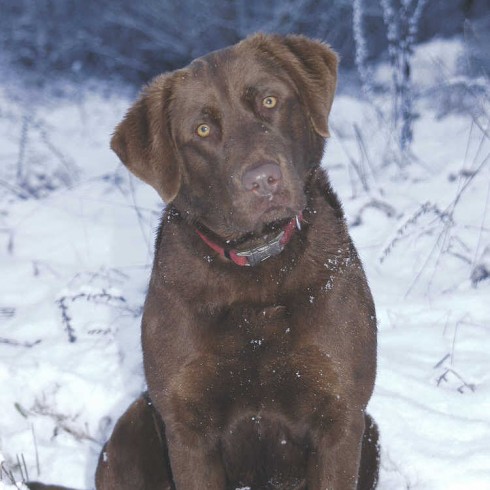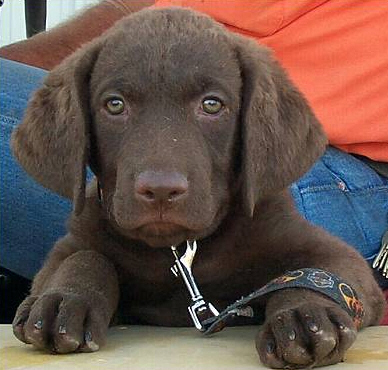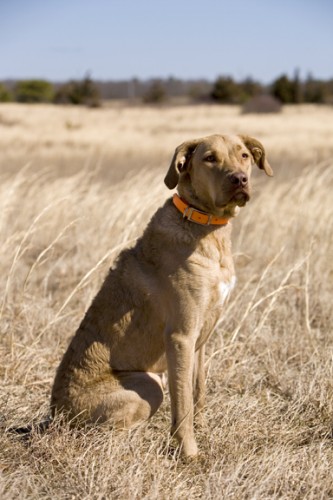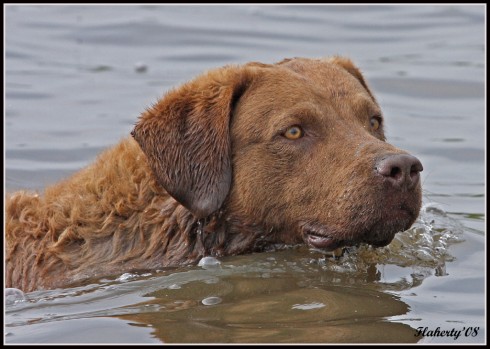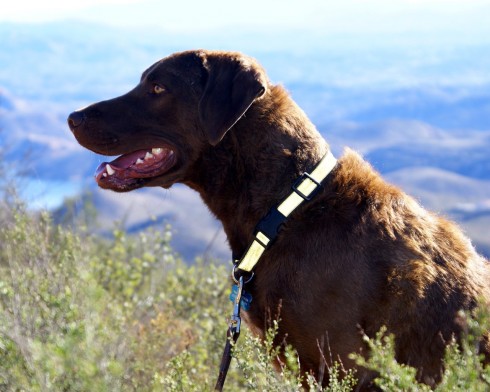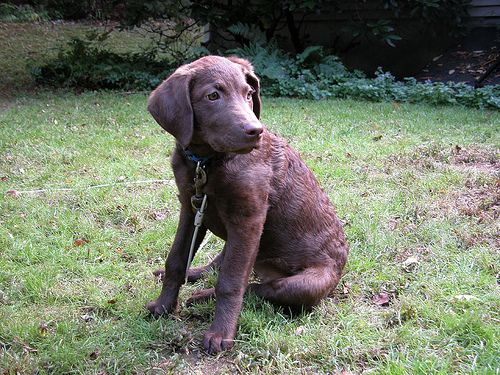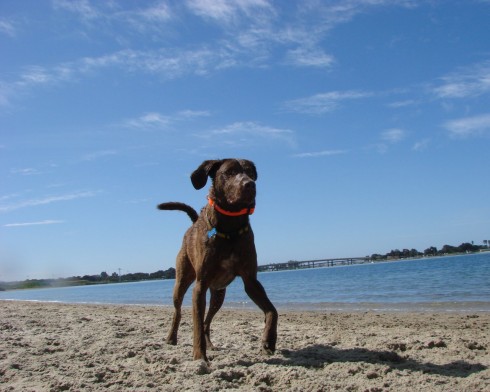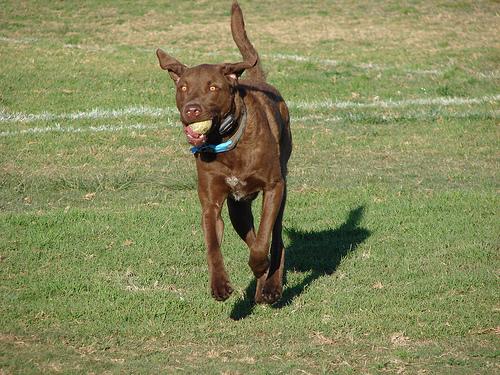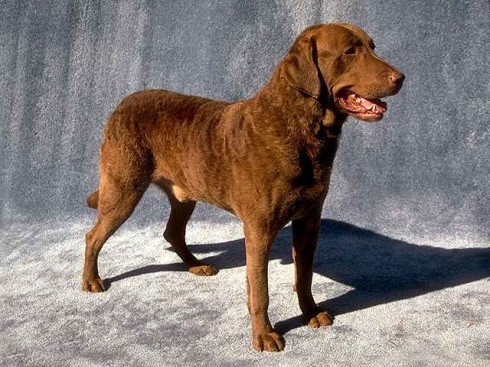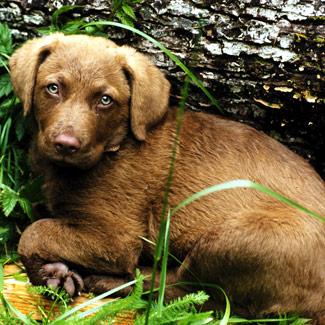Main Index
In Store
Our Web Store
Miniature Schnauzer Picture Gallery
Latest Dog Blogs
- What Are The Basic Commands To Train A Dog?
- PaySafe As The Most Popular Type Of Deposit
- Everything You Need To Know About Pet Sales
- Dogs Contribute To Our Physical And Mental Well Being
- How To Choose Where To Bet On Greyhounds In 2022
- Volunteer With Animals - How To Help Dogs Around The World
- Basic Understanding Of The House Edge
- Why You Should Get A Dog
- Top 20 Popular Dog Names Around The World
- Constipation in Dogs and How to Find Solutions
Chesapeake Bay Retriever
Chesapeake Bay Retriever Picture Gallery
Chesapeake Bay Retriever Breeders
Chesapeake Bay Retriever Clubs/Associations
The Full Chesapeake Bay Retriever Description
The Chesapeake has always had a cheery disposition but a seriousness of purpose toward his work. He faces the winter harshness with courage and an eagerness to perform his retrieving duties. He is a bold, strong, active dog, so he needs plenty of exercise every day. He especially likes swimming, so retrieving games are ideal throughout the summer and fall.
Did you know?
The Chesapeake Bay Retriever originated in the United States.
The breed is known for its prowess in rough, icy water.
The Chesapeake Bay Retriever can be brown, sedge or deadgrass in color.
So you want to own a Chesapeake Bay Retriever?
The Chesapeake Bay Retriever has a thick short slightly wavy coat that sheds profusely in the spring and requires daily brushing.
The Chesapeake Bay Retriever's specialty is to swim through icy water to bring in downed ducks and geese.
Chesapeake Bay Retrievers love to run and swim and require supervised exercise.
Indicative Breed Standard
General Appearance
Well proportioned, active worker with a distinctive coat and intelligent expression. Strong muscular appearance.
Characteristics
Independent, affectionate, and courageous, with a great love of water. Makes a good guardian and companion, especially with children.
Temperament
Bright and happy disposition, alert and intelligent and showing a willingness to work.
Head and Skull
Broad and round with medium stop. Medium-short muzzle, pointed but not sharp. Lips thin, not pendulous. Nostrils well developed. Nose and lips of colour to harmonise with coat.
Eyes
Medium size, very clear, of yellow or amber colour and set wide apart.
Ears
Small, well set up on head, hanging loosely and of medium leather.
Mouth
Jaws strong with a perfect, regular and complete scissor bite, i.e. upper teeth closely overlapping lower teeth and set square to the jaws. Level bite tolerated.
Neck
Of medium length with a strong muscular appearance tapering from head to shoulders.
Forequarters
Forelegs straight, with good bone of equal length to depth of body and showing good muscle. Shoulders well laid back, long in blade with upper arm of equal length placing legs well under body with no restriction of movement. Strong. Pasterns slightly bent. Dewclaws may be removed.
Body
Chest strong, deep and broad, with well sprung ribs. Body of medium length, short but not cobby. Flanks well tucked-up. Back well coupled and powerful.
Topline not roached, but rather approaching hollowness.
Hindquarters
Should be as high or a trifle higher than shoulders. Powerful to supply power for swimming. Stifles well angulated. Good hindquarters are an essential requirement for this breed. Hocks of medium length. Dewclaws, if any, must be removed from the hindlegs.
Feet
Of good size, hare feet well webbed. Toes well rounded and close.
Tail
Should extend to hock. Medium heavy at base and strong. Should be straight or slightly curved. Moderate feathering is permissible.
Gait/Movement
Powerful with no restriction of movement. Correct conformation will lend to single track movement.
Coat
Coat and texture. A distinctive feature. Coat should be thick and reasonably short, not over 4 cms (11/2 ins) long, with harsh oily outer coat and dense, fine woolly undercoat covering whole body; hairs having tendency to wave on neck, shoulders, back and loins. Hair on face and legs only should be very short and straight. Moderate feathering on stern and tail permissible. Curly coat not permissible. Texture of coat very important as dog is used for working under all sorts of adverse weather conditions, often working in ice and snow. Oil in harsh coat and woolly undercoat of extreme value. The coat should resist water.
Colour
Dead grass (straw to bracken), sedge (red gold), or any shade of brown. White spots on chest, toes and belly permissible. The smaller the spot the better. Self-coloured dogs preferred. Colour of coat and its texture must be given every consideration when judging.
Size
Height: dogs: 58-66 cms (23-26 ins); bitches: 53-61 cms (21-24 ins). Oversized or undersized dogs highly undesirable.
About Our Article Directory
- Article
- 27 November 2010
- 2 comments
Canis lupus familiaris
- Breed Article
- 29 May 2010
- No comments
Quick Search
Donate
Latest Dog Pods
- Tips on How to Stop Your Dog from Biting
- Beware - Not All Advertised Dog Rescues Really Are! How Can You Know The Truth?
- Helpful Tips For Dog Obedience Problems
- How to Keep Dogs From Eating Poop
- Dog Grooming Tips - A General Overview of the Very Basics of Dog Grooming
- Recognising Different Types of Dog Obedience Problems
- 5 Important Tips On Feeding A Puppy


